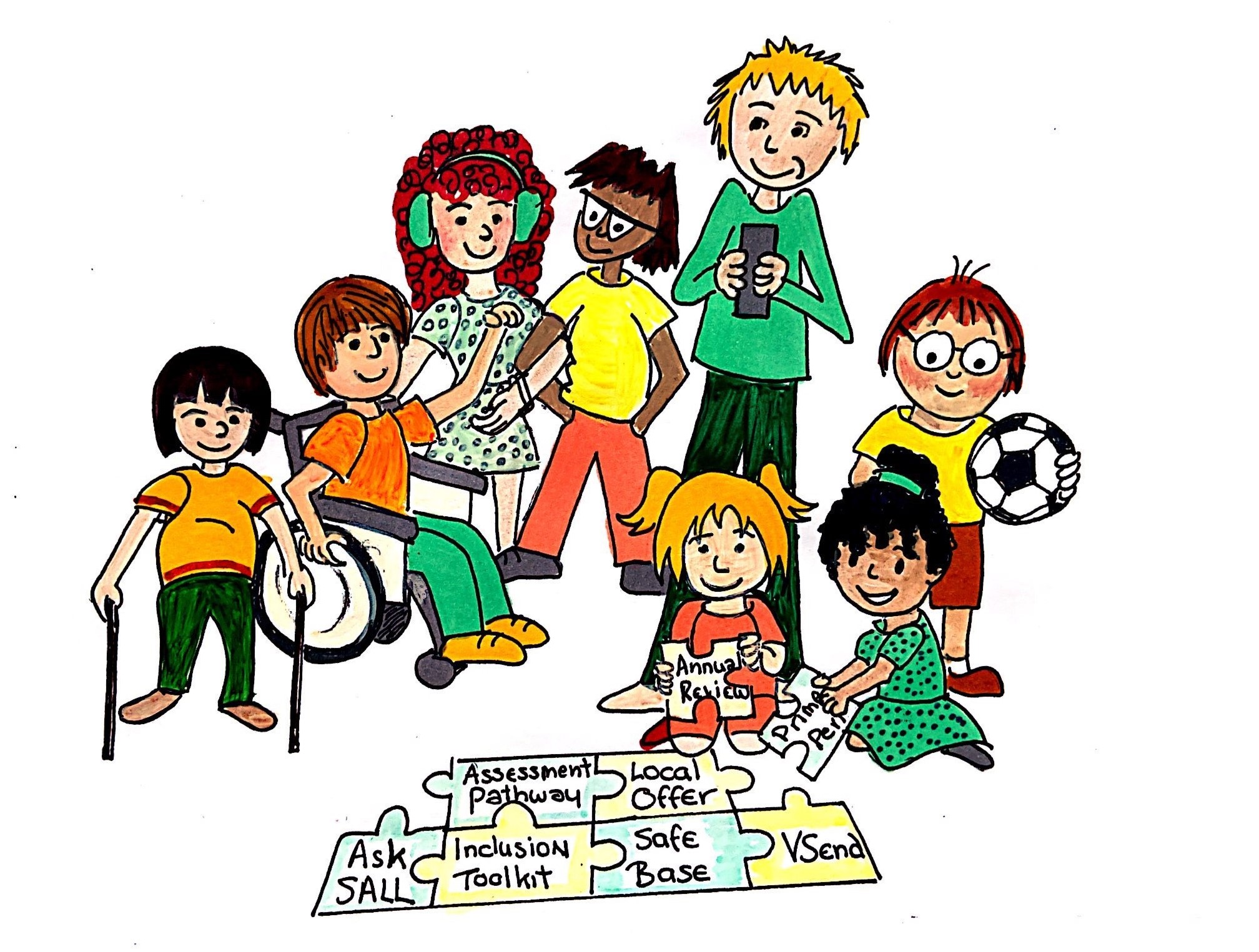Level 7-10 strategies to support highly specialised interventions
High quality teaching, targeted and specialist strategies, approaches and adaptations for pupils should be implemented and supplemented
0-5
- teaching and learning approaches place a high emphasis on direct training, very finely graded and practical tasks which provide opportunities for frequent repetition and reinforcement
- additional adults support the child individually, under the direction of the teacher or manager to:
- work on significantly modified curriculum tasks
- access daily individual support
- encourage independence
- create opportunities for peer to peer interaction
- monitor the progress of the child using highly structured methods
- provide opportunities for child to develop independent living skills through access to targeted interventions
- individualised curriculum approach and planned opportunities to access specific programmes of support
- specialist individual support from a range of VI specialists
- adaptation and modification of all learning resources for all subjects into appropriate medium (i.e. large print, tactile)
- maximising use of residual vision
- ICT equipment that facilitates access to learning. Identification of appropriate equipment through discussion/ advice from SEST
- regular assessment, programmes and advice from the habilitation specialist from SEST to include;
- formal ongoing instruction in the development of early mobility and orientation skills including long cane skills and sighted guide.
- independent early social skills and self- help skills
- training of staff in school
- completion of environmental audit of pre-school environment
- personalised differentiation and adaptation to all areas of curriculum, with high levels of support from a Specialist TA to facilitate access, inclusion and independent learning opportunities and peer to peer interaction and health and safety.
- high level of one to one learning sessions from TA
- high levels of TA support for production of specialist resources. For example, pre-braille, tactile diagrams
- regular communication regarding session planning and assessment between setting and qualified teacher for children and young people with a vision impairment from SEST to ensure access to all aspects of learning
- staff to access additional specialist training including learning of braille code UEB online
- child always has own copy of all learning resources which are clear and produced in specified format
- large print or braille used at all times. Plus need for tactile diagrams, 3D representations, concrete objects and experiences, and multi-sensory learning materials to access the curriculum
- intervention teaching from qualified teacher for children and young people with vision impairment from SEST to teach specialist skills alongside mainstream curriculum
- regular staff training from SEST to raise awareness of different types of vision impairment and strategies to reduce barriers to learning
- peer awareness sessions offered to ensure peer group support
- facilitate social skills to create opportunities for peer to peer interaction
- awareness that a pupil will need more time to complete tasks and that equality of access may mean that they need to do some things differently
- high level of multi- agency planning to meet the needs of the pupil
- a monitoring system should be in place to assess child need, identify outcomes, implement support and monitor and evaluate progress
- planned reviews including the parent and child should take place
5-16
- adaptation and modification of all learning resources for all subjects into appropriate medium (i.e. large print, braille)
- maximising use of residual vision
- ICT equipment that facilitates access to learning. For example, brailler, braille note taker, laptop with screen reader software, penfriend voice recorder, speech software, iPad. Identification of appropriate equipment through discussion/ advice from SEST.
- tegular assessment, programmes and advice from the habilitation specialist from SEST to include:
- formal ongoing instruction in the development of mobility and orientation skills including long cane skills and sighted guide.
- independent living skills, social skills and self- help skills
- independent travel skills
- training of staff in school
- completion of environmental audit of school environment
- personalised differentiation and adaptation to all areas of curriculum, with high levels of support from a specialist TA in class to facilitate access, inclusion and independent learning opportunities and peer to peer interaction and health and safety.
- high level of one to one learning sessions from TA.
- high level of TA support for production of specialist resources. For example, braille, tactile diagrams.
- regular communication regarding lesson planning and assessment between classroom teacher and Qualified Teacher for children and young people with a vision impairment from SEST to ensure access to all aspects of learning.
- school staff to access additional specialist training including learning of braille code UEB online
- building up a picture of need in relation to exam access arrangements will be required. Such arrangements will include additional time, braille and large print papers, tactile diagrams and resources, rest breaks and use of equipment. This must reflect the child's normal way of working.
- pupil always has own copy of all learning resources which are clear and produced in specified format.
- large print or braille used at all times. Plus need for tactile diagrams, 3D representations, concrete objects and experiences, and multi-sensory learning materials to access the curriculum.
- intervention teaching from qualified teacher for children and young people with vision impairment from SEST to teach specialist skills alongside mainstream curriculum.
- regular staff training from SEST to raise awareness of different types of vision impairment and strategies to reduce barriers to learning
- peer awareness sessions offered to ensure peer group support
- facilitate social skills to create opportunities for peer to peer interaction
- awareness that a pupil will need more time to complete tasks and that equality of access may mean that they need to do some things differently
- high level of multi- agency planning to meet the needs of the pupil


